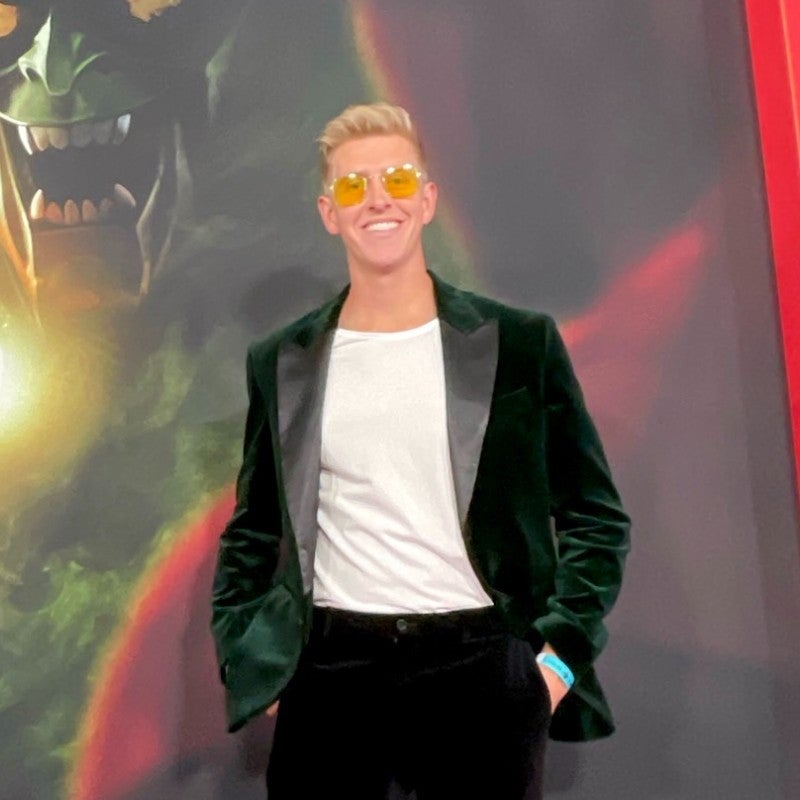 Today, word of mouth marketing has become a healthy alternative to celebrity endorsement.
Today, word of mouth marketing has become a healthy alternative to celebrity endorsement.
Instead of using celebrities to connect with a large audience, micro-influencers — everyday individuals with small, dedicated followings online — can multiply a brand’s voice exponentially, causing its message to appear in millions of users’ social media feeds around the world.
These micro-influencers’ followings are a far cry numerically from celebrities’ networks, yet their messages pack a punch. The authenticity of these influencers causes followers to welcome a branded message with open arms. According to McKinsey & Company, this kind of word-of-mouth marketing is now responsible for 20 to 50 percent of all purchasing decisions.
For marketers hoping to tap into the popularity of destination events, the message is clear: If you want to build a connection between your brand and the attendees of a live event, you need to start small.
Pop-culture events like Lollapalooza, Coachella and Comic-Con each draw a variety of fans from around the world. This is great for the promoters and sponsors of the events, sure — but it’s also great for brands that are looking for a captive, receptive audience.
The power of these events is that they draw large numbers of like-minded consumers. They’re in the same place, at the same time, having many similar experiences — it’s the perfect opportunity for brands to connect with them through small but mighty micro-influencers.
It’s difficult to think of a company or industry that couldn’t benefit from a stronger word-of-mouth reputation, but here’s a look at four industries that can get exceptional value from micro-influencer-fueled event marketing:
Travel Brands
Just traveling to a destination event or conference requires consumers to engage with travel brands like airlines, hotels, and rental car companies. The travel experience gives customers a lot of time to be vocal about their experiences — from the moment attendees leave their hometowns for the event, they’re tweeting about their flights, how long they waited in line, and the quality of their accommodations.
Technology and Software Brands
Technology is necessary to coordinate all of the shows and acts that make up these big destination events. Think about how many thousands of people are listening to a given band at a big music event. Without amplifiers, light show equipment, soundboards, and software, none of it would be possible. Any brand that helps the conference experience go more smoothly for an attendee is ripe for word-of-mouth popularity.
Then, there are the products consumers themselves bring to an event — these offer marketing opportunities that brands should be quick to capitalize on. Think hardware like earbuds, laptops, and phone chargers, but also software and apps for communication, transportation, and socialization. When people in the crowd see their fellow attendees enjoying a popular app, they want to download the app, too. Micro-influencers can help spur this sort of organic sharing along.
Fashion Brands
Several destination events — especially music festivals — are known for what people wear to them. The hype builds before, during, and after the event, as fashion bloggers and large publications alike keep an eye on what everyone is wearing. Both established and new fashion brands can take advantage of the attention by decking out micro-influencers with branded, trend-worthy clothing. When consumers notice the micro-influencers’ snazzy new outfits, they’ll want to wear those clothes, too.
Food and Beverages
Long days and nights of networking, dancing, or just plain sweating in the heat make attendees hungry and thirsty. Whether it’s a food truck placed on the conference steps, catering from a local restaurant in the neighborhood, or a new beer promotion, marketing your food or beverage product during the event is a must. Offer micro-influencers free food and drinks in exchange for their honest reviews — when there’s a plethora of dining options, word spreads quickly about which food is hot and which is not.
Get the best bang for your buck.
Celebrities have been proven to help market brands during destination events (think Doritos-sponsored big-name concerts at SXSW). However, these big names come with big costs both to the budget and reputation of the brand.
For many brands, hiring 100 micro-influencers might be more realistic and provide more bang for your buck than one cost-equivalent celebrity. These micro-influencers also provide a more authentic backdrop for exclusive events, allowing brands to avoid the fallout associated with “selling out” (again, think Doritos and SXSW) or with the main-sponsors-gone-bad phenomenon, as in the case of Subway’s Jared Fogle. Instead, brands thinking outside the box to deploy organic micro-influencer campaigns like RadioShack’s SXSW “Need a Charge?” Twitter campaign.
How will you know when you spot the right micro-influencers to create word of mouth for your brand? Answer these five questions:
1. Is the micro-influencer authentic?
Review a micro-influencer’s social media and blog posts. Does the micro-influencer say what he or she really thinks or feels? Does the writing feel honest and truthful? That’s the kind of person you want to represent your brand. Even if they can’t define it, people buy from brands they perceive as authentic.
2. Does the micro-influencer have trust with the audience?
Sounding authentic is different from gaining and maintaining the trust of an audience. After you check out the micro-influencer’s tone and style, verify the traffic and popularity of the site or social media account to make sure the audience feels the same way you do. If the micro-influencer’s style doesn’t mesh with your audience, your dollars will be wasted.
3. Is the micro-influencer affordable?
Again, the point of micro-influencers is to support a lot of them with a small budget. Understand the associated costs before you invest the time to reach out and make a connection. In my experience, many micro-influencers can be won over with free brand swag alone.
4. Is the micro-influencer accessible?
Bigger brands and major celebrities often have walls built up between the influencer and the sponsor. One big advantage of many micro-influencers is that — unlike celebrity influencers — you won’t need to go through a legal department or scores of managers to discuss a contract. Seek micro-influencers who make the relationship as effortless as possible.
5. Is the micro-influencer open to a long-term relationship?
“One and done” is not the best path for effective word-of-mouth marketing. When this event is over and gone, you’ll want to have a network of micro-influencers who will support your brand for events to come. For instance, a music brand might look for micro-influencers whose blogs are based around attending a large number of music events in the country.
Carol Scott is the director of marketing at Mattr.



